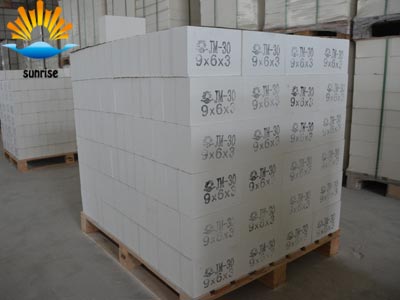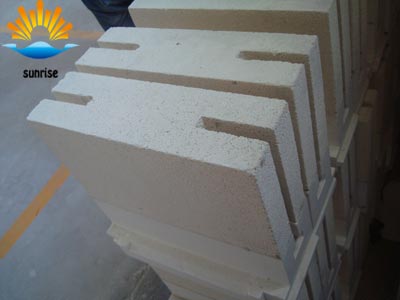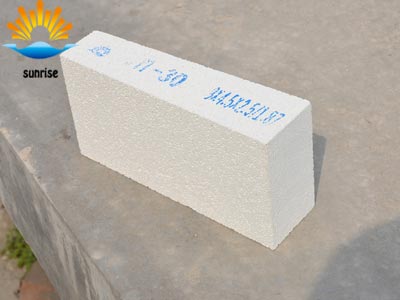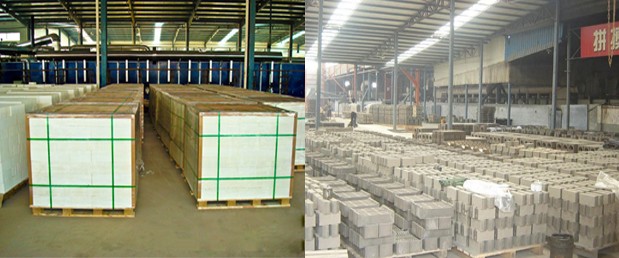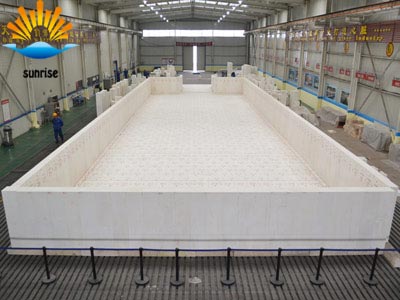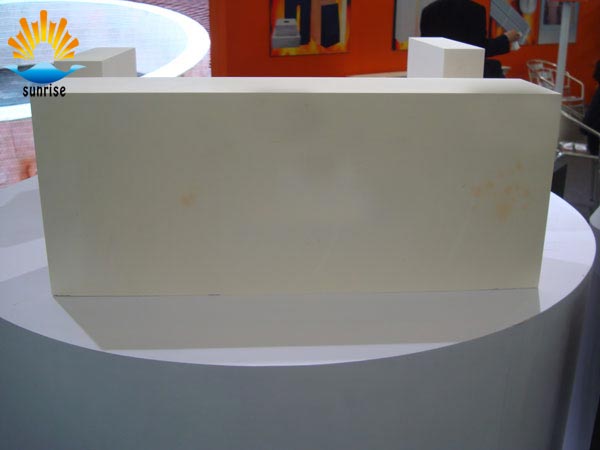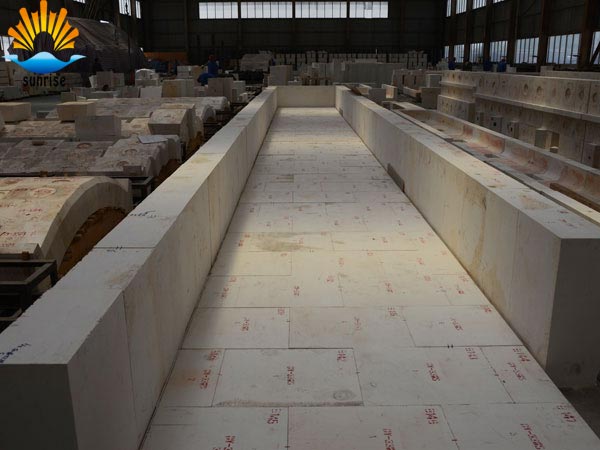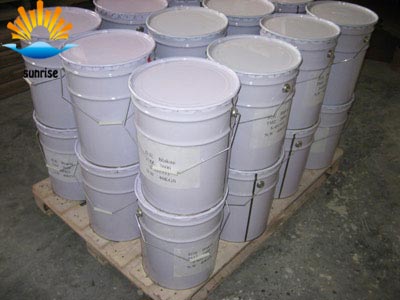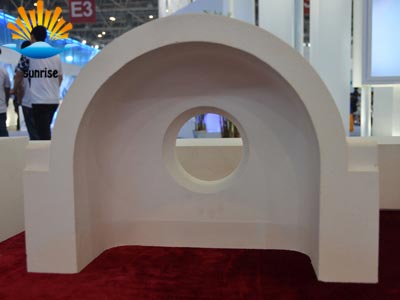► Description Mullite insulation bricks are high alumina refractories mainly made from good quality and pure raw materials.In generally, alumina accounts 40%-75%. Besides mullite,there are also glass phase and christobalite as well as corundum which are good grade fillings. Mullite insulation bricks are widely used for lining in high temperature kilns such as shuttle kiln,roller kiln,glass kiln and petroleum kilns.
►Specifications
1.Low thermal conductivity, good heat insulation.
2.Low thermal melting point. Lightweight mullite insulating bricks save heat and energy.
3.Low impurity content,high temperature resistance; higher alumina content ensures good performance.
4.Customized shapes to reduce bricks quantity and cost.
5.Dense,compact and accurate structure,low porosity rate.
6.High loading temperature,corrosion resistance.

► Application
Due to its lightweight and good insulating performance,our mullite insulation bricks has broad use for fire resistance lining in heat side and insulating layers, thus increases energy efficiency greatly. Mullite lightweight bricks are popular in hot blast kiln crown,flame side and bottom parts; glass melting furnace regenerator,ceramic sintering kiln,Petroleum cracking system corners and linings,ethylene pyrolysis furnaces, tubular furnaces, reforming furnaces of synthetic ammonia, gas generators and high-temperature shullte kilns, etc.
► Physical and chemical index:
| Sunrise Brand | JM23 | JM26 | JM28 | JM30 | JM32 | |
| USA Brand | IFB2300 | IFB2600 | IFB2800 | IFB3000 | IFB3200 | |
| Classification Temperature (℃) | 1260 | 1430 | 1540 | 1650 | 1760 | |
| Bulk Density (g/cm3) | 0.55-0.60 | 0.78 | 0.88 | 1.03 | 1.25 | |
| Cold Crushing Strength (Mpa) | 1.2 | 1.6 | 2.1 | 2.5 | 3.5 | |
| Modulus of Rupture (Mpa) | 0.9 | 1.4 | 1.6 | 2.1 | 2.1 | |
| Reheating Linear Change (%) CT-30 ℃X 8H | 1230℃ -0.5 | 1400℃ -0.5 | 1510℃ -0.5 | 1620℃ -0.9 | 1730℃ -0.9 | |
| Thermal Expansion 1000℃(%) | 0.5 | 0.7 | 0.8 | 0.9 | 1.1 | |
| Thermal conductivity(W/m.k) | 400℃ | 0.14 | 0.27 | 0.32 | 0.41 | 0.49 |
| 600℃ | 0.16 | 0.29 | 0.34 | 0.43 | 0.5 | |
| 800℃ | 0.18 | 0.31 | 0.36 | 0.44 | 0.51 | |
| 1000℃ | 0.20 | 0.33 | 0.38 | 0.45 | 0.53 | |
| Al2O3 (%) | 37 | 54 | 64 | 72 | 77 | |
| Fe2O3 (%) | 1.0 | 0.9 | 0.8 | 0.7 | 0.5 | |
Meet us at The 26th china international exhibition
booth NO: E3-65
Add: china international exhibition center , beijing
Time: 2015-5-20 - 23
.jpg)
As adaptive case management (ACM) systems mature, we are moving beyond simple systems that allow knowledge workers to define ad hoc processes, to creating more intelligent systems that support and guide them. Knowledge workers still need to dynami-cally add information, define activities and collaborate with others in order to get their work done, but those are now just the table stakes in a world of big data and intelligent agents. To drive innovation and maintain operational efficiencies, we need to augment case work typically seen as relying primarily on human intelligence with machine intelligence. In other words, we need intelligent ACM.
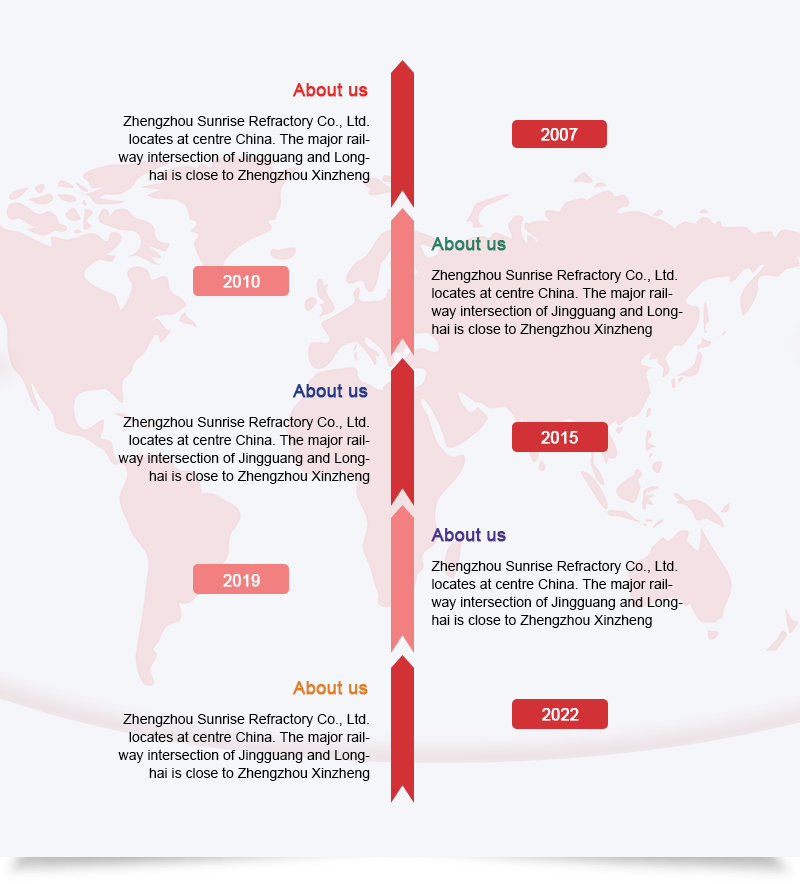
Factory strength »
As adaptive case management (ACM) systems mature, we are moving beyond simple systems that allow knowledge workers to define ad hoc processes, to creating more intelligent systems that support and guide them. Knowledge workers still need to dynami-cally add information, define activities and collaborate with others in order to get their work done, but those are now just the table stakes in a world of big data and intelligent agents. To drive innovation and maintain operational efficiencies, we need to augment case work typically seen as relying primarily on human intelligence with machine intelligence. In other words, we need intelligent ACM.

Highly predictable work is easy to support using traditional programming techniques, while unpredictable work cannot be accurately scripted in advance, and thus requires the involvement of the knowledge workers themselves. The core element of Adaptive Case Management (ACM) is the support for real-time decision-making by knowledge workers.















